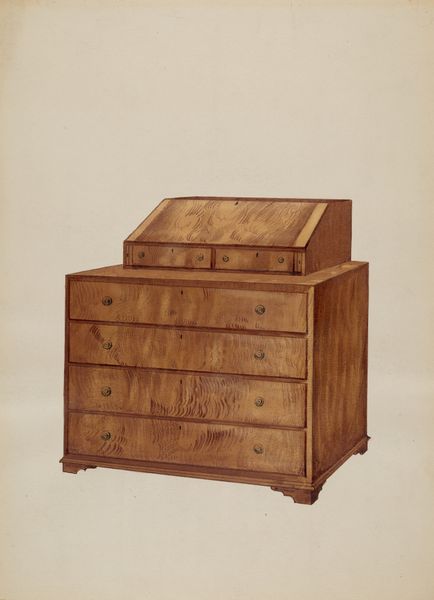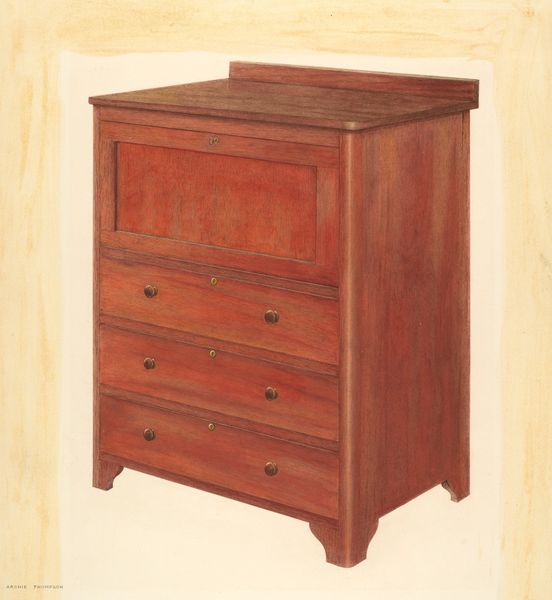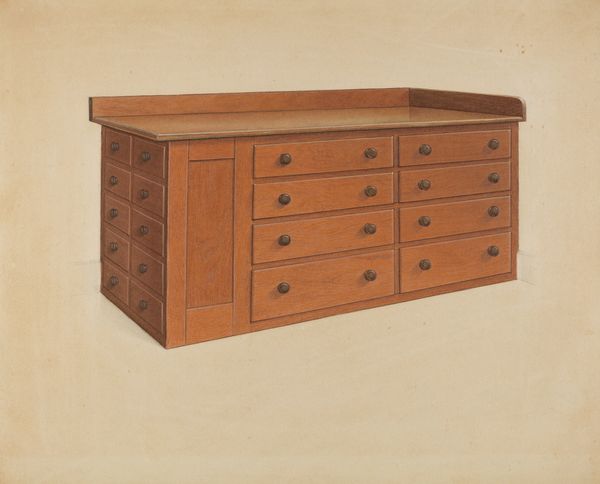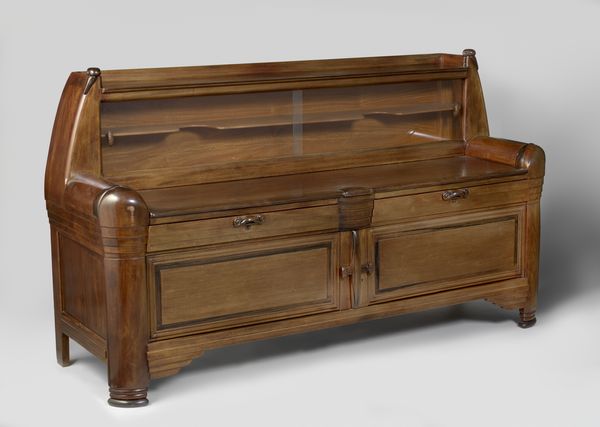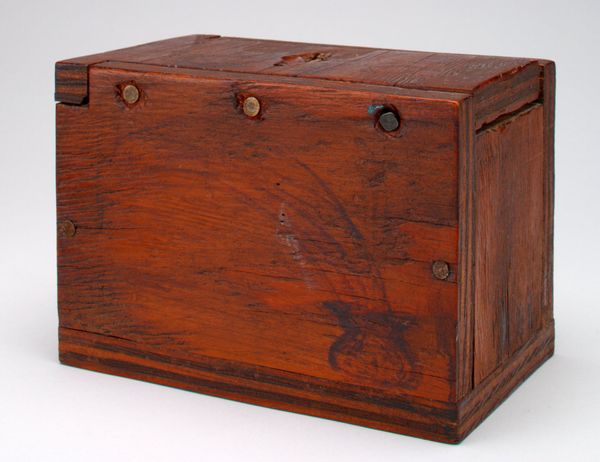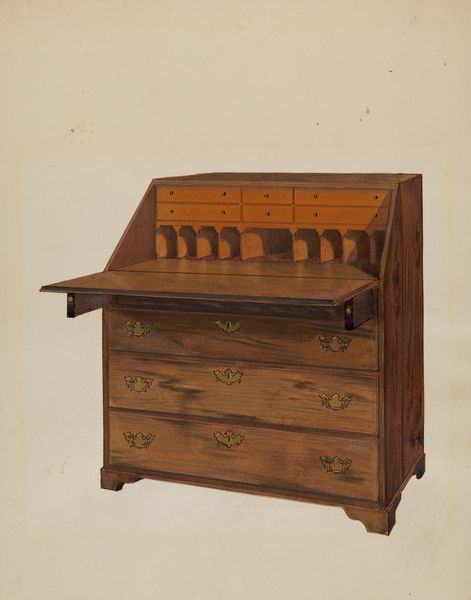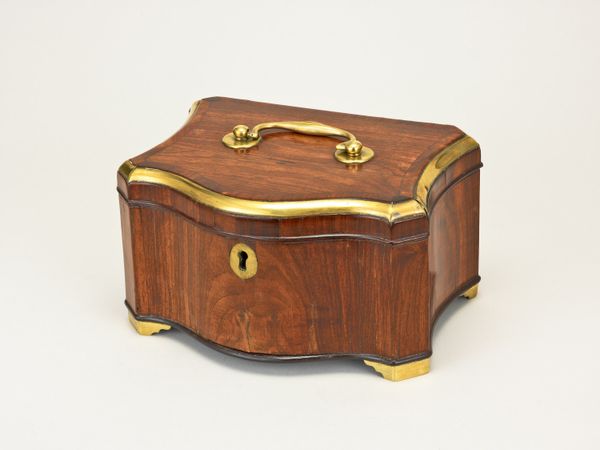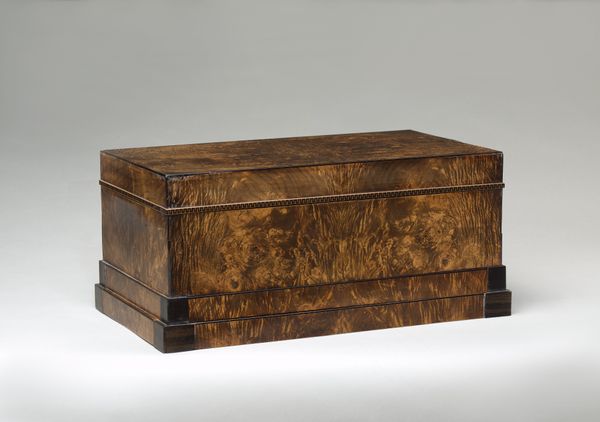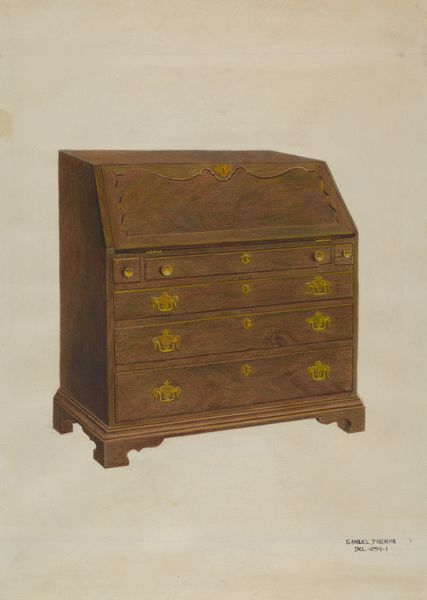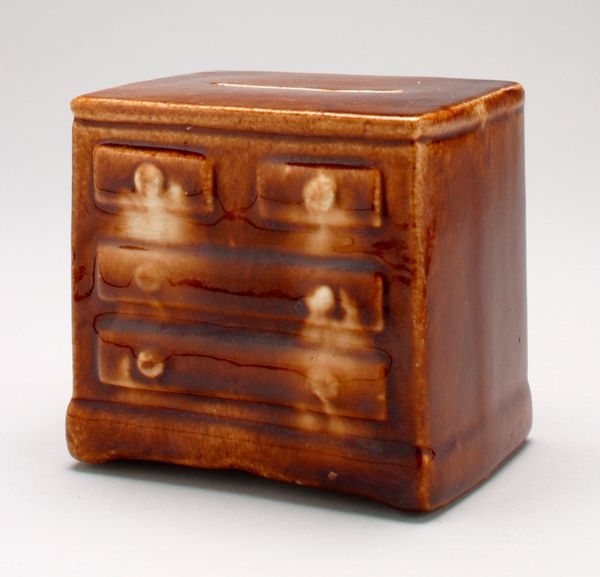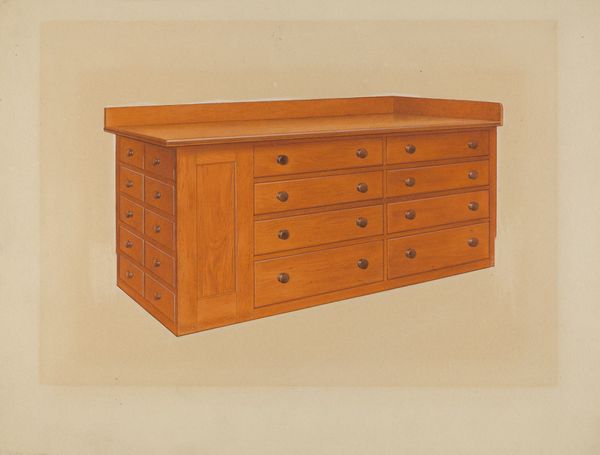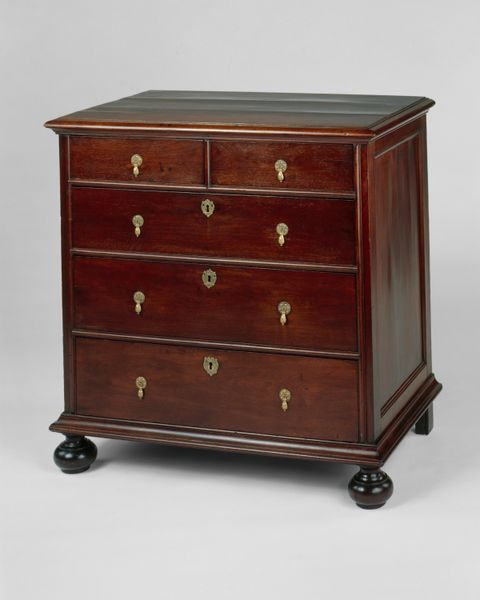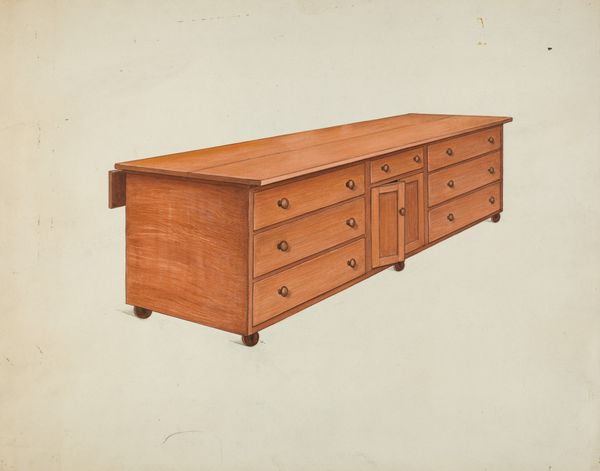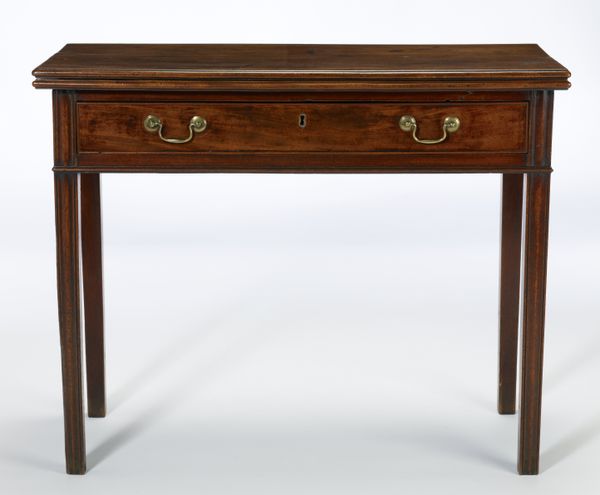
drawing, pencil, wood
#
drawing
#
pencil
#
wood
#
watercolor
#
realism
Dimensions: overall: 32.2 x 45.4 cm (12 11/16 x 17 7/8 in.) Original IAD Object: Drawers: 6 1/2" high; 32" long 17 1/2" deep; knobs: 1 1/2" in diameter; 7/8" deep
Copyright: National Gallery of Art: CC0 1.0
Curator: What strikes me first about Wellington Blewett’s “Bishop Hill: Chest,” created in 1939, is its intimacy. It's a simple, humble rendering of a wooden chest, and the choice of pencil and watercolor feels incredibly personal, almost like a cherished memory captured on paper. Editor: Yes, intimate is a great way to put it. But the scene represented also brings forward questions about representation, like: who gets their material culture memorialized, and why? We're seeing an image of an ordinary, handmade chest elevated here. Curator: Exactly! It's that very ordinariness that resonates. There's a warmth to it, the artist's meticulous attention to the wood grain and the gentle play of light that lends a certain reverence. It invites you to imagine who might have owned this chest, what secrets it might hold. Perhaps trinkets or love letters… Editor: I wonder if there’s also some connection here to the Arts and Crafts movement—an aesthetic foregrounding the handmade against increasing industrialization. What are we to make of an artwork about craft created with watercolors? The politics of making, I suppose. Curator: That makes so much sense. And seeing the fine detail—the subtle color gradations achieved with watercolor—highlights the artist’s own skill and the value in this traditional medium, giving watercolor and drawing a renewed respect. Editor: Perhaps Blewett wanted to call our attention to everyday beauty, but art always participates in the larger questions of value. When the museum collects "Bishop Hill: Chest" what histories are they now preserving or writing? Curator: Thinking about it that way adds such another depth. In the end, maybe the image pulls at the desire to be known, remembered. To turn the overlooked aspects of everyday life into a point of contemplation. Editor: Absolutely. By preserving these everyday artifacts through art, the artist transforms something quite personal into an object of shared cultural value. The chest moves from storage space into display. Curator: Precisely, a treasure chest of memory, indeed.
Comments
No comments
Be the first to comment and join the conversation on the ultimate creative platform.
